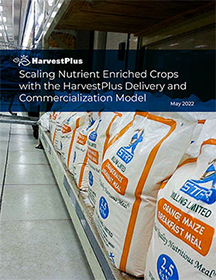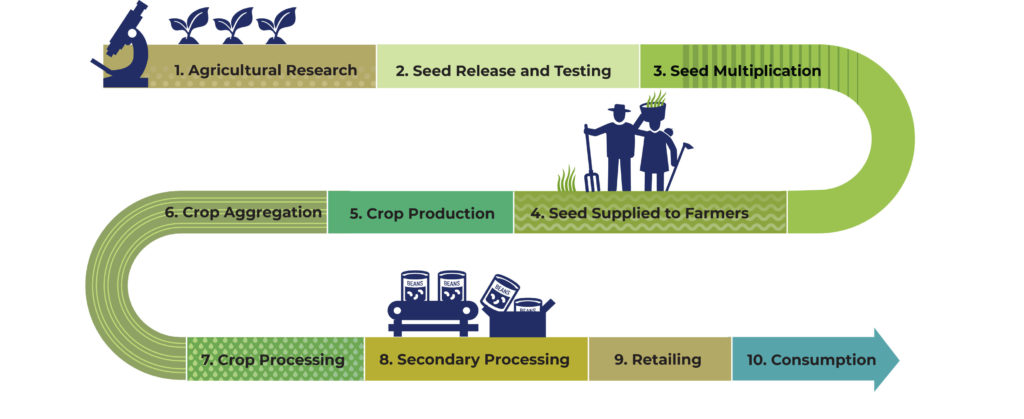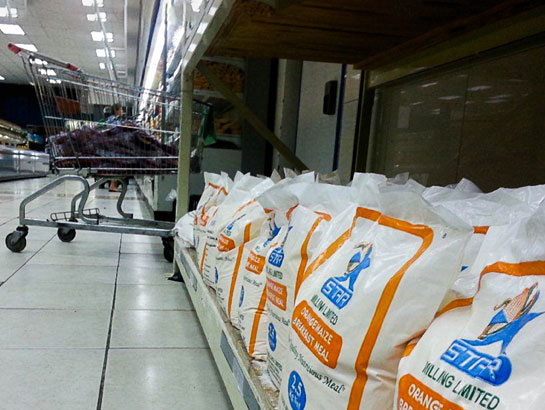The CGIAR’s HarvestPlus program has published its delivery model in a concise brief that outlines the fundamentals of taking biofortified planting material to market and getting nutrient enriched foods on consumers’ plates.
The HarvestPlus delivery program has successfully reached over 60 million people with biofortified crops and foods, with an accelerating pace of expansion. First launched by Harvestplus in 2003, activities to take biofortification to the marketplace were initially experimental, and it was unsure if they would work or be scalable. However, the HarvestPlus delivery model is now active in various forms in 30 countries, and has proven to be a tried and tested method of advancing nutritious crops into foods through commercial market channels.
Once the years of biofortified crop development have been completed by CGIAR expert breeders and national agricultural research systems (NARS), the seeds become market commodities. Creating demand for the new crop varieties begins with seed multipliers, who need assurance that there is sufficient demand for the seeds from farmers.
Seed multiplication is a slow process; it relies on natural, annual (sometimes biannual) cycles of crops so there is only one opportunity per year to scale up seed production. Seed production is also dependent on weather conditions, unlike other manufactured commodities that can be produced all year. Ensuring production will meet farmer demand can be a gamble for multipliers.
While farmers are looking for seeds that will nourish their families, the harvested product also needs to contribute to household income. HarvestPlus and its partners engage actors throughout the crop value chains to help generate awareness and demand among local consumers, offtakers, aggregators, and food manufacturers.

Scaling Nutrient Enriched Crops
with the HarvestPlus Delivery and
Commercialization Model
The brief traces delivery and scaling activities all through seed and food value chains.
The compelling pitch for nutrient-enriched crops (NECs) is that they are a natural source of essential vitamins and minerals, additive free, clean label, locally grown, and ethically sourced. As such, NECs are leveraging these key global food trends, which are influencing purchasing trends by all types of consumers, from the very low income to the affluent.
Crafting the right simple message and tweaking the value proposition to the right audience is where the demand creation expertise at HarvestPlus takes place. HarvestPlus works with marketing experts who tailor these insight-driven messages to different target audiences. Meanwhile, HarvestPlus works on the enabling environment to ensure government support and regulatory compliance, and that technology is also leveraged to facilitate market growth.

The key to success in scaling has taking learnings from all the implementation plans. This involved replicating tactics that work in each country, accelerating the most cost-effective scaling methods, and engaging the best partners along the value chain. It is not possible to only focus on one step in the chain: if one step is neglected, the entire chain breaks.
While the delivery model is the tactical toolbox, the HarvestPlus scaling model is the summation of all activities to continuously improve, enlarge, and increase reach and availability of nutrient enriched seed, grains and foods. HarvestPlus has refined and published both models in this brief, which show investors and donors not only how success has been achieved so far, but how we can apply these learnings to more countries, crops, and other products and technologies that could combat malnutrition.
For more information about HarvestPlus scaling efforts, contact Jenny Walton.
